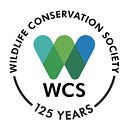Top 5 Priorities for Addressing Wildlife Trafficking in Latin America
By Adrian Reuter, Ana Lambert, Kurt Duchez, Yovana Murillo, Jeremy Radachowsky, and Padu Franco | October 1, 2019
Illegal wildlife trade is devastating for wildlife and humans. In Latin America, the most biologically diverse region in the world, wildlife trafficking not only threatens to drive hundreds of species to extinction. It could collapse entire ecosystems, imperil local livelihoods, undermine governance, and bring insecurity to rural communities.
In our work as conservationists, we maintain deep relationships with local communities, organizations, and governments. That experience helps us understand challenges facing wildlife in Latin America and recommend policies to protect them.
As we prepare for the1st Americas High Level Conference on Illegal Wildlife Trade, we believe the following five priority actions will be essential to tackling this challenge in the region:
1. Break the illegal trade to Asia and other continents
Trans-Pacific trafficking of wildlife is rapidly growing, adding to existing illegal trade to Europe and within the Americas. The increasing number of international organized criminal trade networks represents one of the greatest threats to Latin America’s wildlife.
Several high value species have become especially vulnerable to trade to Asia. Abronia lizards, dart frogs, scarlet macaws, sea cucumbers, seahorses, sharks and rays, and the totoaba fish have experienced a massive recent increase in trade, and are being sold as pets, luxury foods, medicines, amulets, and ornaments. Our recent investigations into jaguar trade suggest that a new market is emerging for the region’s iconic wild cat.
“To prevent the trafficking of Latin American species from reaching the crisis levels, we must break transcontinental trade links before they become further established.”
To prevent the trafficking of Latin American species from reaching the crisis levels currently observed in Southeast Asia and Africa, we must break transcontinental wildlife trade links before they become further established. To do so, we need an understanding the dynamics of transcontinental trafficking of wildlife from Latin America to Asia and other continents, as well as cooperation on enforcement.
2. Strengthen laws and their enforcement
Wildlife trafficking is a complex threat sometimes conducted by organized networks engaged in other high impact crimes. Yet wildlife-related laws are often inadequate to confront the emerging threat. State agencies frequently lack the appropriate equipment, tools, and skills to detect, investigate, and prosecute wildlife crimes.
International agreements such as CITES (Convention on International Trade in Endangered Species of Wild Fauna and Flora) play an important role, but must be reinforced at all levels of the enforcement chain — from field patrols to the justice system — by enhanced national legislation, training, and equipment.
“International agreements such as CITES play an important role, but must be reinforced at all levels of the enforcement chain.”
Where such institutional strengthening has taken place, we have seen success. In Guatemala the training of rangers, strengthened investigative capacity, creation of an environmental justice forum, and establishment of the country’s first environmental court, have increased the number and success rate of wildlife crime prosecutions.
3. Support community participation
Much of Latin America’s wildlife habitat is governed by Indigenous Peoples and local communities who have lived and worked sustainably there for centuries. They have time-tested solutions that promote biodiversity conservation and limit forest degradation and deforestation.
The Tacana Indigenous People in Bolivia promote and scale community-based solutions to the sustainable use of wildlife and forests. This effectively deters illegal trade of natural resources. In Mesoamerica and the Andes, Amazon & Orinoco, communities have embraced SMART patrols to strengthen their ability to combat wildlife trafficking.
“Reducing demand is crucial. Civil society plays an important role in addressing illegal wildlife trade globally, as ultimately society needs to reduce its consumption.”
4. Stop the demand
Reducing the demand for wildlife and derived products is crucial. Civil society plays an important role in addressing illegal wildlife trade globally, as ultimately it is society that needs to reduce its illegal wildlife consumption to close the markets for these products.
We must strengthen collaboration between governments and civil society to raise awareness of the impacts of illegal trade on wildlife populations. At the same time, we must generate, share, and manage information to disrupt criminal networks. Campaigns, such as the “If you buy, you are an accomplice” implemented in Peru, have demonstrated their effectiveness.
5. Elevate the priority given to wildlife trafficking in Latin America
Wildlife trafficking must be treated as a serious crime by governments. When authorities respond weakly, punishments do not deter others from committing these crimes. In an environment of corruption and impunity, seizures do not lead to arrests or prosecutions, and criminal networks are not disrupted.
Helping the public understand the threat posed by wildlife trafficking is fundamental to addressing this crisis. Political support at the national and regional levels is needed to treat it as a serious crime, better investigate its connection to other types of organized crime, and improve collaboration between authorities in both source and destination countries.
Ultimately, in order to protect wildlife and wild places, governments, communities, donors, and the general public must recognize the danger of wildlife crimes and commit to tackle them together.
Adrian Reuter is Latin America Regional Wildlife Trafficking Senior Advisor for WCS (Wildlife Conservation Society); Ana Lambert is WCS Latin America Illegal Wildlife Trade Program Officer; Kurt Duchez is WCS Illegal Wildlife Trade lead for Mesoamerica and the Caribbean; Yovana Murillo is WCS Illegal Wildlife Trade lead for Andes, Amazonia & Orinoquia; Jeremy Radachowsky is WCS Regional Director for Mesoamerica and the Caribbean; Padu Franco is WCS Regional Director for Andes, Amazonia & Orinoquia.
